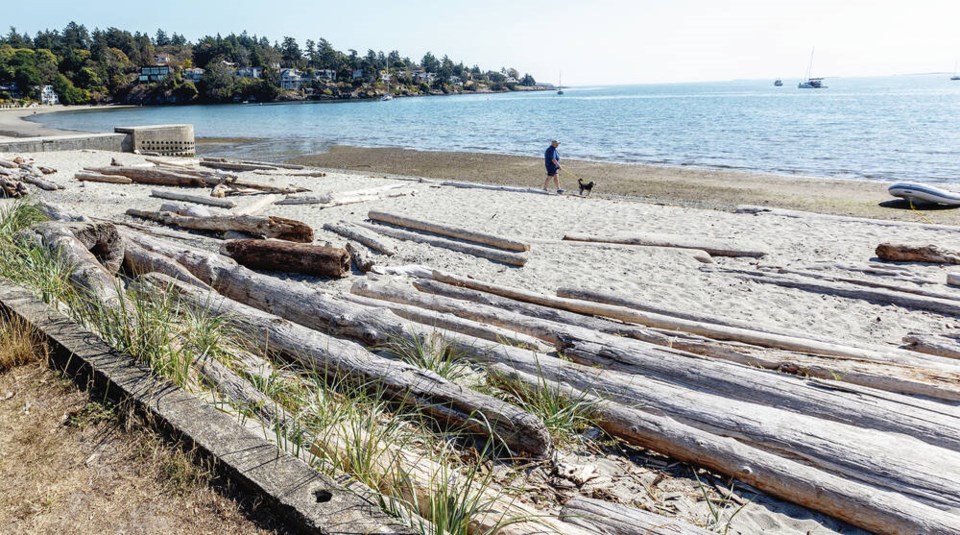I have spent the last couple of months exploring the global polycrisis and the set of responses — great turnarounds — proposed in the Earth For All report.
But what, you might reasonably ask, does this all mean for us here in the Greater Victoria region? How can its concepts be translated into local action?
One approach, framed and informed by global and local ecological reality, is called bioregionalism.
As originally conceived by the International Union for the Conservation of Nature in 1973, a bioregion was purely an ecological concept, part of a nested set of bio-geographic regions that go from the global to the local.
According to One Earth’s Bioregions 2020 website, there are 185 discrete bioregions, which in turn contain 844 terrestrial ecoregion divisions. The bioregions are themselves located within 52 sub-realms of the world’s eight major biogeographical realms.
Here on southern Vancouver Island, we are part of the Puget Lowland Forests ecoregion, which surrounds the Salish Sea and includes Vancouver and Seattle.
Our ecoregion is nested within the Pacific Northwest Coastal Forests Bioregion, which runs from the Santa Cruz Mountains in California to Graham Island in British Columbia. It includes Vancouver Island and Haida Gwaii and adjacent marine areas, and comprises a large part of what some call Cascadia.
But while useful to ecologists, the concept of a bioregion was made more useful to communities in a famous 1977 essay by Peter Berg, a San Francisco-based environmental writer, and Raymond Dasmann, chief ecologist at the International Union for the Conservation of Nature.
They expanded the concept to include humans, human culture and activity, defining a bioregion as “geographical terrain and a terrain of consciousness … a place and the ideas that have developed about how to live in that place.”
This biocultural model, they proposed, should be used to “establish an ecologically and socially sustainable pattern of existence” within a given place.
Those places, they suggested, should largely be based upon watersheds, “the drainage systems [that] help to define and tie together the life of the bioregion,” although they caution that “the final boundaries of a bioregion are best described by the people who have lived within it.”
Writing as they were in a North American context — Berg’s focus was the Northern California bioregion where he lived —they paid attention to the Indigenous ways of knowing about and living within the bioregion before European settlement.
They emphasised “living-in-place,” the need to understand the ecology, history and culture of the land and its peoples, wryly observing: “We know more about property lines than we do about the life that moves under, over, and through them.”
Technically, the Greater Victoria region is not a bioregion in the ecological sense. But a bioregional approach to managing this place where we live would be useful, and indeed may be essential.
As the global ecological and social challenges mount, as the polycrisis deepens, we need to learn how to live well together in this place that we share, not just with humans but with many other species, and how to do so within the ecological and biophysical constraints of this region.
The biocultural model of bioregionalism has been widely taken up, including locally. The One Planet Saanich initiative was instigated as part of a global project by a U.K.-based group called Bioregional, while the Saanich Peninsula Environmental Coalition has created a bioregional framework that has now been adopted by all three municipalities on the Saanich Peninsula: Central and North Saanich and Sidney.
At a larger scale, a group called Regenerate Cascadia is working to activate local groups in the interest of “the long term stewardship of the Cascadia Bioregion.” (One of the two primary conveners of Regenerate Cascadia is Clare Attwell, a local fabric artist and activist, and a member of the Board of Conversations for a One Planet Region, of which I am president.)
Together, we are helping to organize a Cascadia Bioregional Activation Tour by Joe Brewer, one of the current champions of bioregionalism and author of The Design Pathway for Regenerating Earth.
Joe will be visiting Victoria this month, including participating in a public forum at the University of Victoria the evening of Oct. 24 – mark your calendars. More on his work next week.
Dr. Trevor Hancock is a retired professor and senior scholar at the University of Victoria’s School of Public Health and Social Policy
>>> To comment on this article, write a letter to the editor: [email protected]



